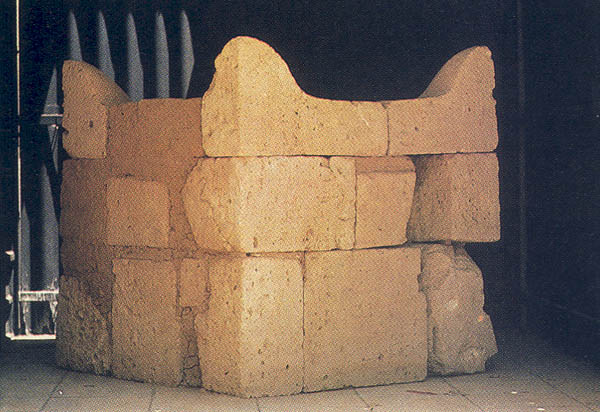Image Details

Dan Cole
Israelite “Horned” Altar. Found disassembled and embedded in an eighth-century B.C.E. wall (see photo of disassembled altar) at Tel Beer-Sheba, this reconstructed altar (shown here) had been dismantled during King Hezekiah’s religious reforms (c. 715 B.C.E.), after which the blocks were reused as wall stones. Although the altar’s blocks had become separated, it was relatively easy to identify them as belonging to the same structure. They all had been cut from calcareous sandstone, different in color and harder than the common limestone usually used by the Beer-Sheba wall builders. Fitting the blocks together again proved simple, because they had been cut to precise dimensions, with a different height for each course of stones. The raised points on the corners at the top are undoubtedly the “horns of the altar” referred to in Exodus 27:2: “You shall make [the altar’s] horns on its four corners; its horns shall be of one piece with it.” Standing more than 5 feet high, the Beer-Sheba altar conforms to the height of 3 cubits prescribed for the altar of the wilderness Tabernacle in Exodus 27:1.
